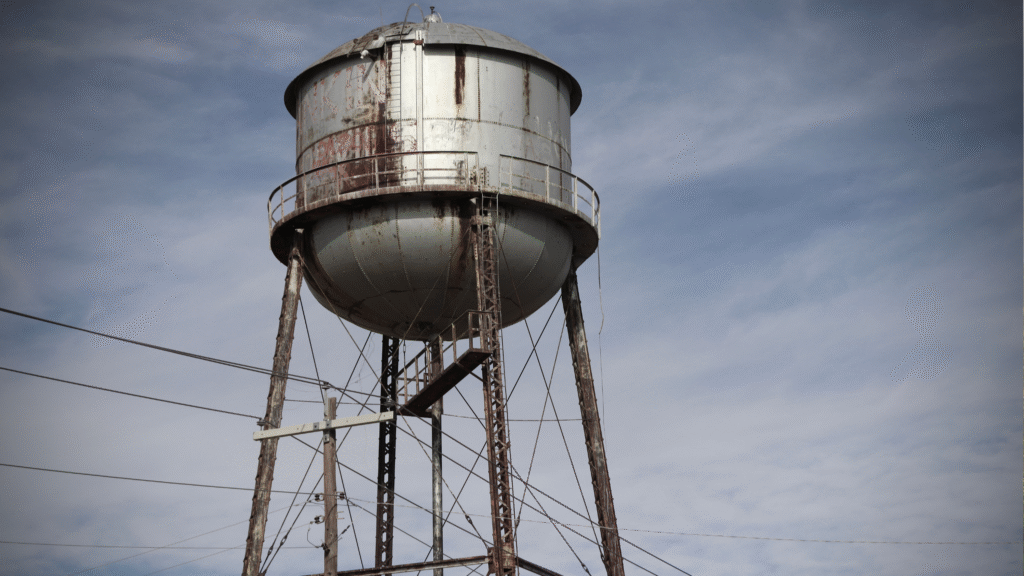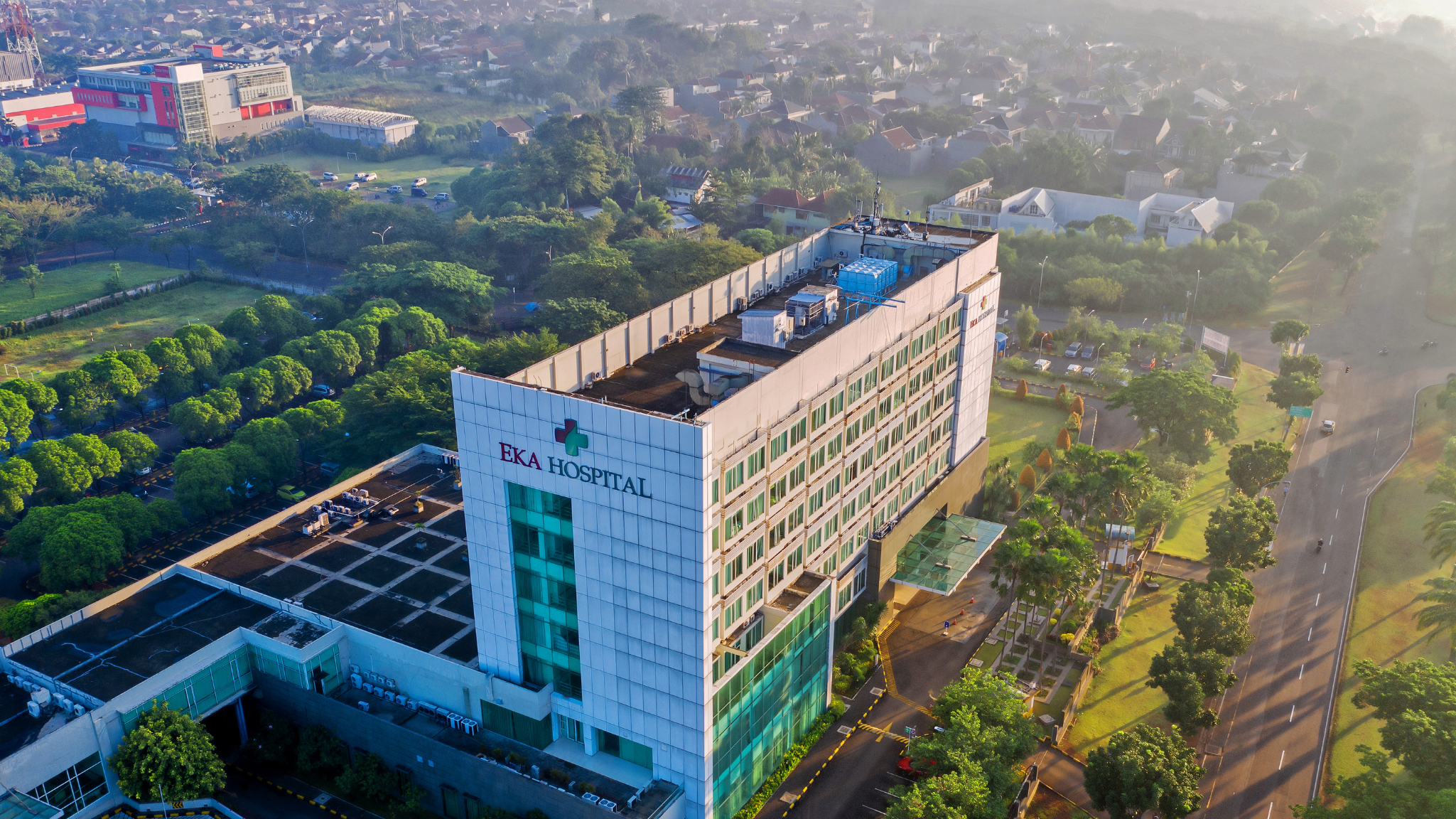Ensuring Water Security: Addressing Challenges in Aging Infrastructure
Water security is not just a matter of utility, but also of patient safety, infection control, and day-to-day continuity. Yet across the United States, aging infrastructure is putting that security at risk. From corroded pipes to failing pressure systems, many hospitals and long-term care facilities are relying on water systems built decades ago for entirely different demands.
As these systems degrade, so does their ability to deliver clean, reliable water in the volumes and quality healthcare environments require – in other words, their ability to safeguard sustainable access to acceptable quality water. Add in the rising stress of climate change, population growth, and emergency preparedness for the future , and the cracks begin to show — both literally and operationally.
At EAI, we’re spotlighting this challenge as part of our “The Water Industry is All Industry” month. This article dives into the risks posed by the outdated nature of America’s infrastructure, why water security must be a healthcare priority, and what can be done now to protect the people and operations that depend on it most.

The State of America’s Aging Water Infrastructure
According to the United States Environmental Protection Agency (EPA) much of the drinking water infrastructure in the regions was installed following or earlier in World War II, which was between the 1940s and 1970s. Philadelphia, known as the City of Brotherly Love, has one of the oldest water infrastructure ages in the country. Many of the country’s systems are now operating well beyond their intended design life, with corroded pipes, outdated treatment technologies, and unreliable valves creating serious vulnerabilities and risk of water borne pollution. For hospitals, clinics, and other healthcare facilities, these aging systems are not just inconvenient — they’re a growing liability.
According to the American Society of Civil Engineers (ASCE), America’s infrastructure scores a C– grade, with more than 2.2 million miles of underground pipes in poor condition. This means there is a greater risk of infrastructure failure can lead to boil-water advisories, pressure loss, and bacterial intrusion, contributing to water borne pollution. Any of which can disrupt essential services like sterilization, dialysis, wound care, or surgical support.
Moreover, these risks are not hypothetical. Facilities in urban and rural areas alike have faced temporary closures or care disruptions due to broken mains or water quality violations. In a healthcare setting, the margin for error is razor-thin. Water security depends on infrastructure that can deliver adequate quantities of water, with acceptable quality, at all times.
Water Security as a Healthcare Imperative
We all know how water is a clinical necessity in the healthcare sector. Every faucet, sterilizer, dialysis machine, and HVAC unit depends on consistent, high-quality water to function safely. When water security is compromised, so is patient care, and the consequences can be immediate.
As UN Water has defined, water security refers to the ability to safeguard sustainable access to water in adequate quantity and acceptable quality for health, livelihoods, and development. For hospitals and long-term care facilities, this means having the infrastructure, treatment, and contingency planning in place to ensure reliable access even during service interruptions, climate change induced extreme weather events, or contamination incidents.
A lack of water security can result in:
- Interrupted surgical operations due to a loss of sterilization capability
- Increased infection risk from compromised hand hygiene and equipment cleaning
- Delayed dialysis treatments requiring patient transfers or costly outsourcing
- Regulatory citations when water quality falls below health department standards
Now that climate change impacts grow and America’s infrastructure continues to age, healthcare facilities face increasing risk from water related disasters. Reliable water infrastructure is no longer just about efficiency — it’s a frontline issue in infection control, patient outcomes, and public trust.

Key Challenges for Water Security in Healthcare Facilities
Hospitals, outpatient centers, and long-term care homes depend on highly resilient water systems, yet many operate within aging infrastructure built decades ago. These vulnerabilities, combined with growing environmental stressors and regulatory scrutiny, make water security a rising challenge across the healthcare sector.
1. Aging Infrastructure and Deferred Maintenance
Many U.S. healthcare facilities rely on drinking water infrastructure installed before the 1970s. Corroding pipes, outdated valves, and limited backflow protections create points of failure that can compromise water quality. Maintenance backlogs and budget constraints often delay necessary upgrades, increasing the risk of contamination or service disruption.
2. Extreme Weather and Climate Impacts
Flooding, droughts, and freezing events are now common threats. Hospitals in Texas, Louisiana, and California have experienced emergency shutdowns due to water service loss from weather-related disasters. As climate change accelerates, water-related risks are expected to grow — especially in coastal and drought-prone regions.
3. Waterborne Contaminants and Disease
Aging systems are more prone to microbial intrusion, including Legionella and other pathogens. Combined with lapses in monitoring or disinfection, this can lead to serious outbreaks. Healthcare environments, where immunocompromised patients are most vulnerable, face heightened stakes.
4. Infrastructure Fragmentation and Limited Capacity
Healthcare campuses are often served by municipal systems with inconsistent investment. When those systems experience stress or failure, hospitals are left scrambling. Without robust internal water management plans, facilities may lack the resources to respond quickly.
5. Regulatory and Compliance Pressures
State and federal expectations around water testing, emergency preparedness, and infection control are intensifying. Facilities without up-to-date water management plans or documentation may face fines, liability, or accreditation issues.
The Cost of Inaction: Consequences of Infrastructure Failure
When water infrastructure fails, the impact on healthcare is immediate and often catastrophic. What’s at stake is far more than building systems — it’s patient safety, regulatory compliance, and community trust.
1. Patient Health Risks
Disruptions in water supply or contamination can directly affect surgical suites, dialysis machines, sterile processing, and drinking water access. A single failure can expose patients to waterborne pathogens or force the postponement of critical care. For immunocompromised patients, even minor lapses can be life-threatening.
2. Financial and Legal Fallout
Healthcare organizations that experience infrastructure-related water failures may face significant financial burdens. Emergency repairs, temporary facility closures, legal claims, and CMS penalties can quickly add up. For example, Legionella outbreaks linked to poor water system oversight have resulted in millions in settlements and regulatory fines.
3. Reputational Damage
Hospitals that fail to maintain safe, operational water systems may lose public trust. Media coverage of outbreaks, boil water notices, or failed inspections can damage an organization’s credibility and erode community confidence in care delivery.
4. Operational Disruptions
From HVAC systems to sterilizers, water is essential for daily hospital operations. A water outage or contamination event can halt surgeries, force evacuations, and require emergency response from staff already stretched thin.
5. Regulatory Noncompliance
Regulators increasingly expect proactive infrastructure maintenance and water risk management. Facilities that fall behind on documentation, disinfection monitoring, or contingency planning may face citations, loss of accreditation, or operational limitations.
In a sector where every second matters, the cost of inaction is far too high.
The Infrastructure Behind Healthcare Water Security
Water security in healthcare facilities depends on far more than what flows from a tap. It’s an intricate system that includes underground pipelines, storage tanks, pumps, treatment equipment, and digital monitoring systems — all working to deliver clean, safe water across critical departments like operating rooms, laboratories, dialysis units, and HVAC systems.
According to the American Society of Civil Engineers (ASCE), America’s drinking water infrastructure is approaching the end of its useful life, with over 2.2 million miles of pipes in poor or unknown condition. Failures in these aging components not only pose risks to healthcare delivery but also to public safety and socio-economic development, especially in areas where outages would disrupt regional emergency response.
In rural hospitals and long-term care facilities, the challenge is even greater. Limited funding, fewer staff, and aging buildings make water infrastructure vulnerabilities harder to detect and address. Local governments and water utilities often struggle to fund major upgrades, creating a growing gap between system needs and operational capacity.
To secure healthcare water systems, facilities must partner with experienced water management providers like EAI, who understand both the technical and regulatory demands. Proactive risk assessments, infrastructure audits, and tailored response plans help prevent infrastructure failure. This ensures that water remains reliable, safe, and in adequate quantities where it matters most.
Water Quality Risk in Aging Pipes and Distribution Systems
Aging pipelines are one of the most persistent threats to water security in healthcare. Across the U.S., many hospitals, outpatient centers, and senior care facilities rely on drinking water infrastructure that hasn’t been significantly upgraded in decades. As this infrastructure deteriorates, the risk to patient safety grows.
Here’s how America’s aging infrastructure affects water quality in healthcare settings:
- Corroded or lead-based pipes: Older piping systems can leach metals and contaminants directly into potable water, compromising its safety and violating health standards.
- Cracks, leaks, and degraded joints: These allow for infiltration of waterborne pollution, especially during low pressure events or nearby construction.
- Stagnation and dead legs: In complex water systems, unused or underutilized branches can create pockets where bacteria, including Legionella can multiply.
- Biofilm accumulation: Aging materials support microbial habitats that are difficult to disinfect with routine treatment, increasing infection risk.
- Limited hydraulic capacity: Outdated infrastructure may not support modern healthcare demand, reducing system resilience during extreme weather events or high-use periods.
These issues are especially critical in healthcare, where patients often have compromised immune systems. Even short-term exposure to poor-quality water can lead to serious infection, regulatory consequences, or loss of public trust.
How EAI Supports Healthcare Water Security
At EAI, we believe water security is foundational to healthcare delivery. Reliable water is essential to infection prevention, patient hydration, medical sanitation, and facility resilience. We support hospitals, clinics, and long-term care facilities with a comprehensive strategy to safeguard their water systems through infrastructure investment, sustainable water management, and collaboration with the private sector.
Our Water Treatment for Healthcare guide includes:
- Infrastructure Risk Assessments
We evaluate legacy drinking water infrastructure, identify vulnerabilities, and prioritize replacements to reduce the risk of system failure or microbial contamination. - Custom Water Management Programs
EAI helps healthcare facilities implement robust programs that align with industry best practices and regulatory expectations, ensuring acceptable quality water for patients and staff. - Emergency Response and Contingency Planning
We work with facilities to develop rapid-response protocols for water-related disasters such as flooding, line breaks, or extreme weather events, minimizing disruption to care operations. - Digital Monitoring and Reporting Tools
Our advanced tools allow for real-time monitoring of water quality, system performance, and historical trends, supporting compliance and long-term asset planning. - Education and Training
We equip staff and contractors with the knowledge to manage aging systems and maintain water security in both routine and high-stress conditions.
Whether you operate in a rural community with limited infrastructure investment or manage a large urban hospital, EAI provides the support, insight, and partnership to keep your water systems safe, compliant, and resilient.
Partner With EAI to Strengthen Water Security
Aging systems, climate threats, and deferred maintenance all pose risks to patient safety and operational resilience. At EAI, we help healthcare facilities assess vulnerabilities, modernize water infrastructure, and implement strategies that safeguard reliable access to clean water. Let’s build a smarter, stronger system together. Contact EAI for a customized water infrastructure evaluation.